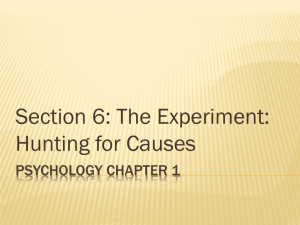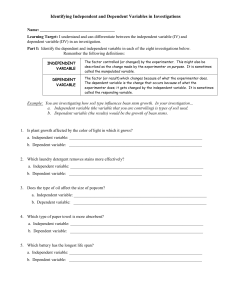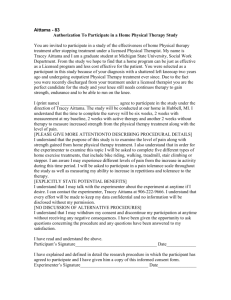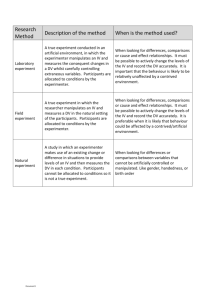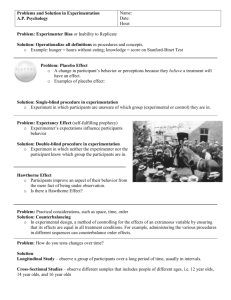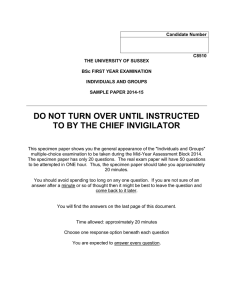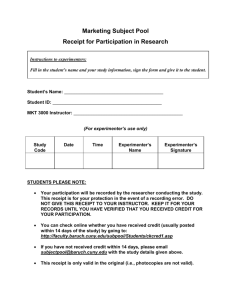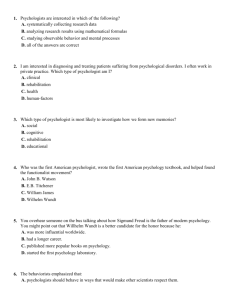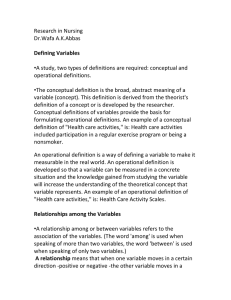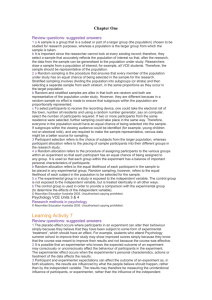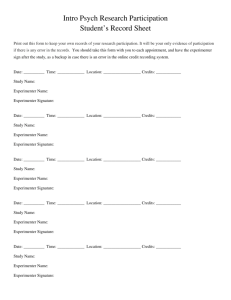The Experiment
advertisement
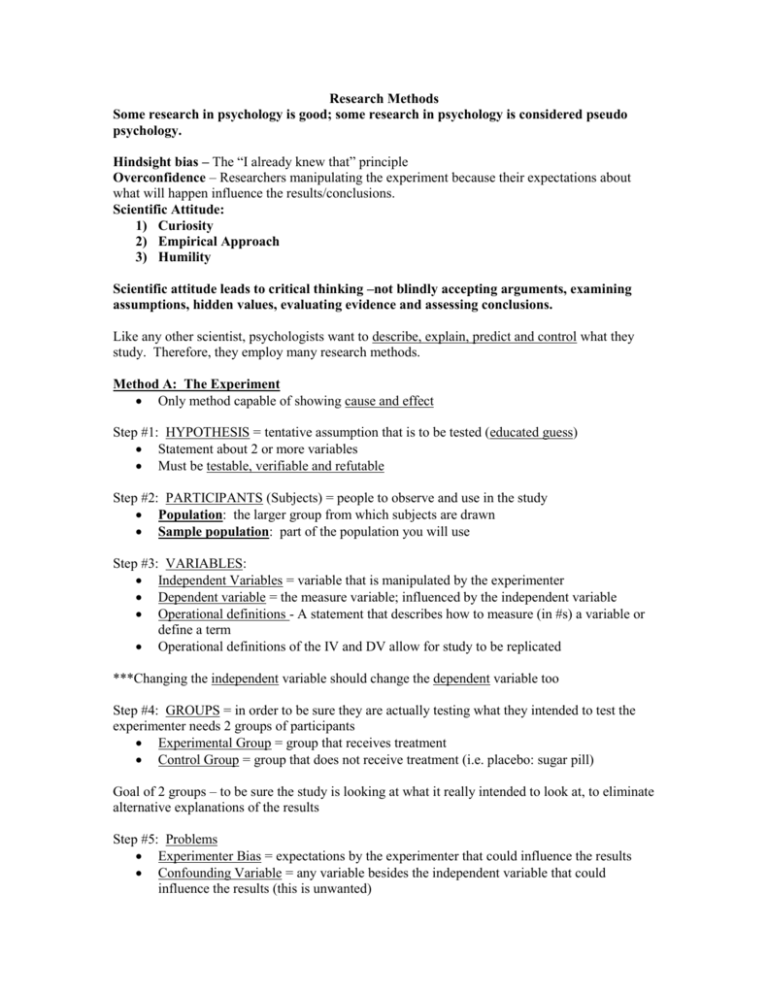
Research Methods Some research in psychology is good; some research in psychology is considered pseudo psychology. Hindsight bias – The “I already knew that” principle Overconfidence – Researchers manipulating the experiment because their expectations about what will happen influence the results/conclusions. Scientific Attitude: 1) Curiosity 2) Empirical Approach 3) Humility Scientific attitude leads to critical thinking –not blindly accepting arguments, examining assumptions, hidden values, evaluating evidence and assessing conclusions. Like any other scientist, psychologists want to describe, explain, predict and control what they study. Therefore, they employ many research methods. Method A: The Experiment Only method capable of showing cause and effect Step #1: HYPOTHESIS = tentative assumption that is to be tested (educated guess) Statement about 2 or more variables Must be testable, verifiable and refutable Step #2: PARTICIPANTS (Subjects) = people to observe and use in the study Population: the larger group from which subjects are drawn Sample population: part of the population you will use Step #3: VARIABLES: Independent Variables = variable that is manipulated by the experimenter Dependent variable = the measure variable; influenced by the independent variable Operational definitions - A statement that describes how to measure (in #s) a variable or define a term Operational definitions of the IV and DV allow for study to be replicated ***Changing the independent variable should change the dependent variable too Step #4: GROUPS = in order to be sure they are actually testing what they intended to test the experimenter needs 2 groups of participants Experimental Group = group that receives treatment Control Group = group that does not receive treatment (i.e. placebo: sugar pill) Goal of 2 groups – to be sure the study is looking at what it really intended to look at, to eliminate alternative explanations of the results Step #5: Problems Experimenter Bias = expectations by the experimenter that could influence the results Confounding Variable = any variable besides the independent variable that could influence the results (this is unwanted) Step #6: Control Measures = Things done to avoid the problems Single-blind = control what the subject is aware of – does not know what is being tested Double-blind = control what the subject and experimenter is aware of – doesn’t know what is being tested Randomization = selection and assignment of subjects to groups through random/chance procedures Quasi-experiments Measurement of dependent variables when independent variables were not entirely under the experimenter’s control can provide strong evidence suggesting cause-effect relationship Behavioral genetics- the study of how genes and heredity affect behavior Family studies & twin studies - lack of control may weaken conclusions OPERATIONAL DEFINITIONS Definition Before we can measure a variable, we need to know exactly what it is. For example, if we wish to examine the relationship between grade point average and library use, we must be able to define "grade point average" and "library use." Conceptual Definitions Conceptual definitions define a concept by means of other concepts, making them difficult to measure. For example, a conceptual definition of a serial publication is that it is issued in successive parts at regular intervals and intended to be continued indefinitely. Operational Definitions An operational definition identifies one or more specific observable conditions or events and then tells the researcher how to measure that event. Typically, there are several operational definition possibilities for variables and values. The operation chosen will often have an immediate impact on the course of the research, especially the findings. Operational definitions must be VALID -- do they measure what they are supposed to measure? It is easy to develop definitions that are easily operational, but which lack meaning and appropriateness. The operational definition may involve the use of proxy variables. Here, the researcher is never completely certain that she is measuring the precise property they intend to measure. Operational definitions must be RELIABLE -- the results should be the same when done by different people or by one person at different times. Here is an operational definition of a periodical. An item is a periodical if (1) the citation does not contain a publication place and (2) the citation contains either volume and listing numbers or a chronological designation that includes month or season. Thus, the researcher knows exactly what to look for when determining whether a bibliographic citation is or is not to a periodical publication. If there are difficulties in creating a good operational definition, that indicates a serious problem. For example, it will be difficult to study "negative book reviews" if you can not operationalize "negative" and "review." By convention, some terms need not be defined. "Before" and "after" are good examples.
